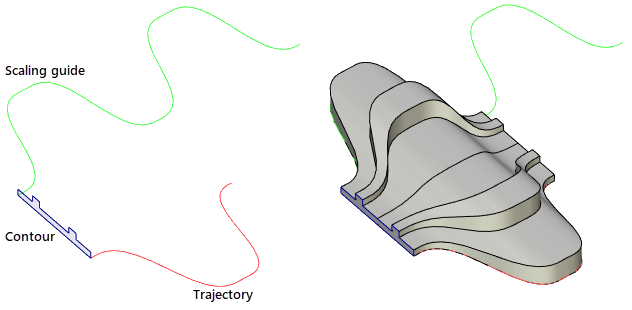Methods for Calculating Auxiliary Vectors by Guides in Sweep |
  
|
Auxiliary vectors are used by the system for orienting coordinate axes of an intermediate section (rotating the section) or for calculating the scale factor for an intermediate section. When using an additional guide, the auxiliary vector calculation is done as follows. The auxiliary vector of each intermediate section starts on the trajectory – at the origin of the coordinate system of the intermediate section. The end point of an auxiliary vector, that defines its direction, is located on the additional guide. Calculation of such end point for defining auxiliary vector can be done by one of the four methods.
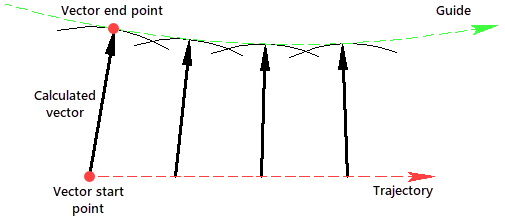
By minimum distance. The end point of the vector will be the point on the guide nearest to the vector start on the trajectory.
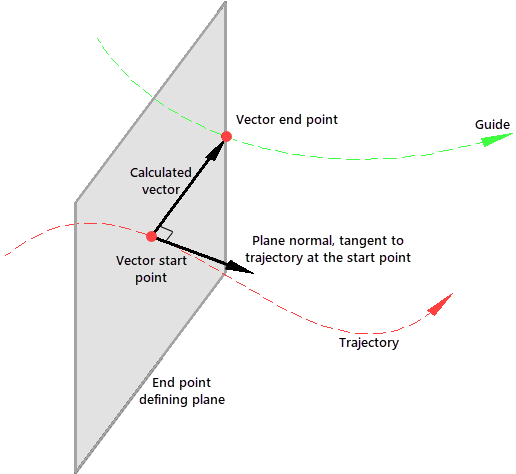
Perpendicular to the path. A plane is constructed through the start point perpendicular to the trajectory. This plane must intersect the guide. The end point is defined as the intersection of the plane and the guide. If no intersection is found between the plane and the guide for some point on the trajectory, an error in operation regeneration is output. Follows are examples of using options Perpendicular to the path and By minimum distance:
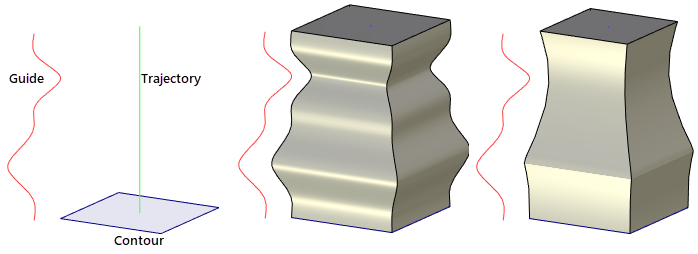
By parameter. Position of any point on a curve can be defined by a parameter – a value defining the point position in percent of the curve length (0 – at the start of the curve, 1 – at the end of the curve). The point on the guide is defined by the same parameter value as the vector start point on the trajectory. This method of calculating an auxiliary vector is least demanding on the orientation and length of the guides.
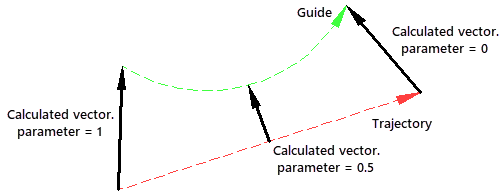
This option is automatically used when orienting sections By guides. The user can also turn it on manually when defining the scaling or twisting law, for example, in situations, when the additional guide is shorter than the trajectory, or other methods are inadmissible. Here is an example of using the option By parameter:

By offset. First, the length of the trajectory portion is calculated from the start of the curve to the auxiliary vector start. The vector end is then found by the same length on the guide from the origin. In this method, the length of the additional guide must be greater than or equal to the length of the trajectory. This option can be used when, for example, only a portion of the additional guide shall be used that is equal to the total length of the trajectory. Follows is an example of using the option By offset:
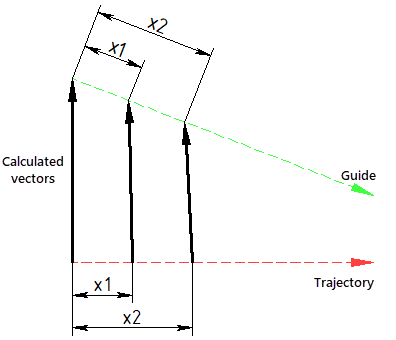
Operation created by the option By offset:
